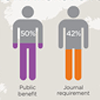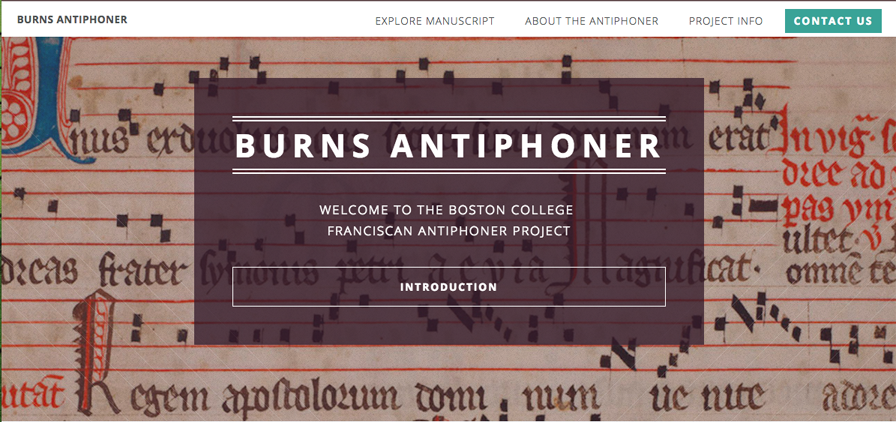
The Digital Scholarship Group at Boston College Libraries and Dr. Michael Noone are proud to introduce Burns Antiphoner, an interactive open access resource. Based on a 14th-century Franciscan antiphoner, music notation, metadata, performances and textual incipits can be queried and viewed via a dynamic presentation layer.[1] This project represents ongoing collaboration from many scholars and agencies. The website includes scholarly essays about the manuscript written by Dr. Graeme Skinner (Sydney Conservatorium of Music, University of Sydney) as well as videos of several performances from short sections of the manuscript by Schola Antiqua (dir. Juan Carlos Asensio Palacios), recorded in the Primate Cathedral of St. Mary of Toledo, Spain. It received the support of an Academic Technology Innovation Grant at Boston College (2015 – 2017).
Missus est Gabriel (Missa est Gabriel [Missus est Gabriel] (fol. 17v)
About the manuscript:
(by Dr. Michael Noone and Dr. Graeme Skinner)
This fourteenth-century manuscript antiphoner (from the Latin antiphonale, or antiphonarium, a book of antiphons) is a volume of monophonic chant—plainsong, or plainchant—used by male or female religious personnel for singing the divine office of the Roman Catholic Church. In this instance, the book was almost certainly compiled for, and used by, members of the Franciscan (or Clarissan) order during the 1300s. The book contains the complete words and music for two genres of variable chants—antiphons and responsories—for the offices of the entire annual calendar of saints’ days (sanctorale), as well as text-only incipits or cues indicating other items to be sung, notably hymns (with metrical rhyming texts), and other items that were sung to simple melodic formulas (tones), such as versicles, psalms, and canticles (usually extracts from the Bible or other scriptures). As such, the volume originally complemented several other words-only books, including one containing the complete texts of the necessary psalms and canticles (psalterium). Another book also contained the words of the antiphons and responsories (without musical notation), and also the words of chapters and lessons (Biblical, patristic and hagiographic pericopes) and prayers, which were also sung to simple formulaic tones. The Franciscans—members of the Order of Friars Minor, founded by St. Francis—were the first to make and use the type of book described as a breviary (breviarium).
According to custom, there may have also been a companion volume containing the antiphons and responsories of the parallel annual Sunday cycle of the daily office (temporale), copied around the same time by some of the same scribes. By the late middle ages, it had become customary for liturgical chant books arranged in calendar order to begin with the pre-Christmas season. The movable temporal (Sunday) cycle started with the first Sunday in Advent, and the fixed-date sanctorale (saints-day) cycle with the major saint’s day usually closest to it, the feast of St. Andrew (30 November), as in the case of this manuscript.
The manuscript is currently on display in the exhibition Beyond Words: Illuminated Manuscripts in Boston Collections; Manuscripts for Pleasure & Piety, at the McMullen Museum of Art, Boston College, from September 12 – December 11, 2016.
The interactive manuscript:
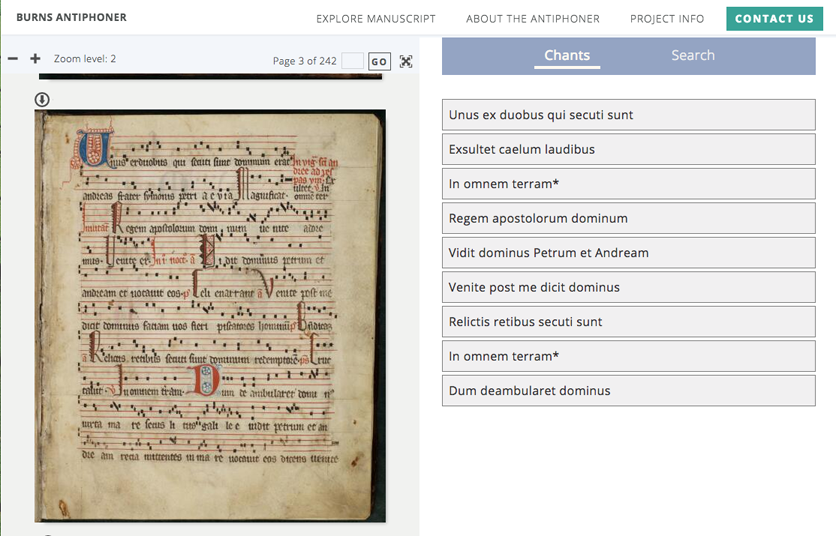
The interactive manuscript can be explored by scrolling through the digitized images of each folio (left side) with the corresponding incipit text (right side). Incipit texts (right side) contain information about the Feast, Office, Genre, and Mode relevant to each incipit, as well as musical notation that has been transcribed from the manuscript. The manuscript can also be searched according to the above descriptions (i.e. Feast), full-text, or musical incipit. A user guide includes further details and instructions on how to use the manuscript viewer.
The interactive manuscript was built on data drawn from the text and musical notation, which was was structured and encoded using MEI standards. This data is outputted as IIIF manifests and JSON, ingested and rendered with an IIIF image server and Lunr.js search index. The user interface was built on Diva.js and Jekyll. Our documentation, code, and data is shared in our GitHub repository, and the data is available to the scholarly community through a collaboration with CANTUS Database (CDB). Additional details outlining the technical infrastructure and praxis can be found online. This project involved collaboration with colleagues at Boston College and beyond, specifically staff in Digital Scholarship, Digital Library Programs, and Systems & Applications in the Boston College Libraries, the John J. Burns Library, and members of the Music Department.
Questions or feedback can be sent to Anna Kijas.
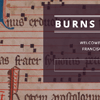

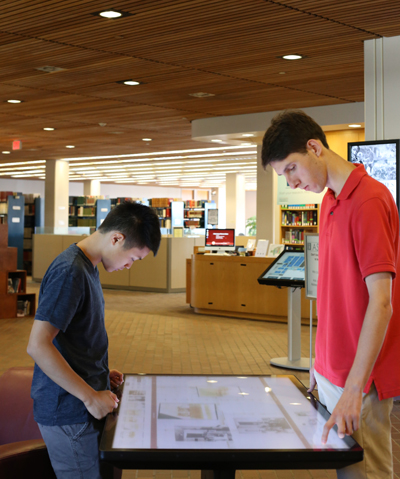
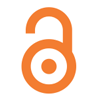


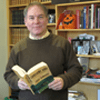
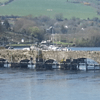

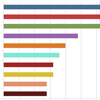



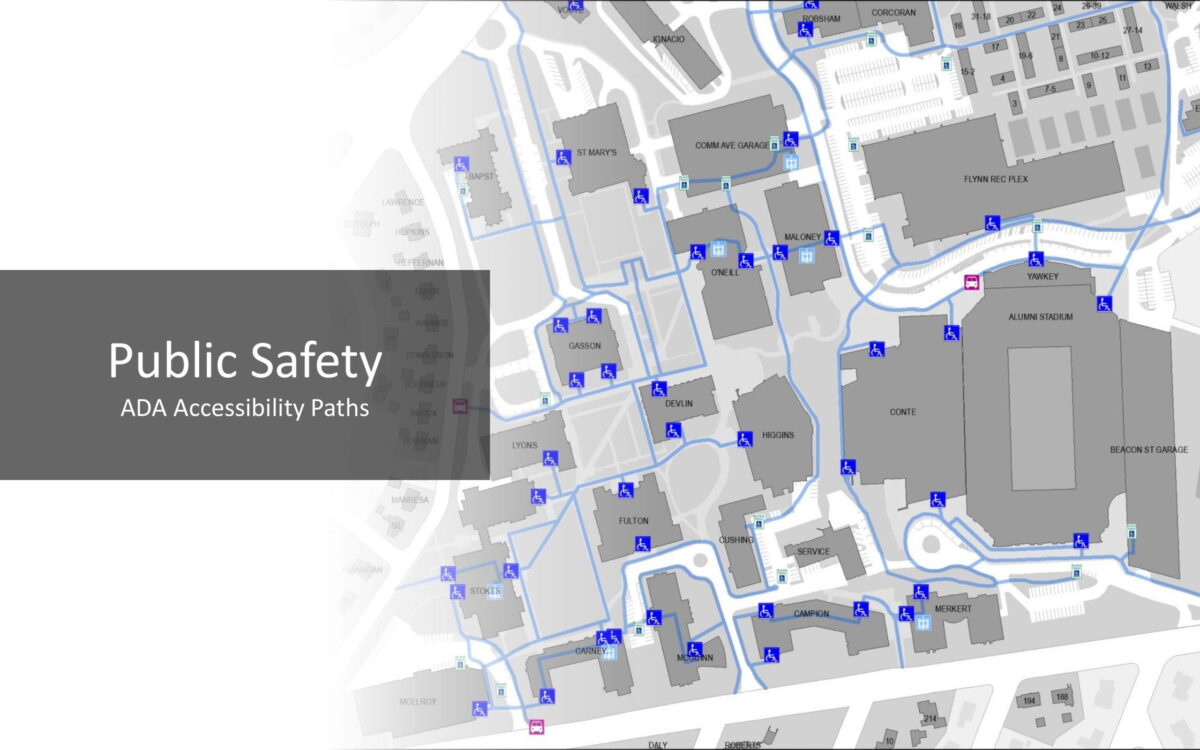



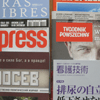
 It is a defining mark of any major academic library to possess an extensive collection of materials in many languages which represent the distinct and special knowledge areas reflected through these languages and the global nature of scholarship. The Boston College Libraries provide a strong example of this and collect widely in French, German, Spanish, Italian, Russian, Latin, Greek and Irish. We also have holdings in a number of other languages including Arabic, Bulgarian, Chinese, Dutch, Hebrew, Japanese, Polish, among others. These holdings include books, journals, and newspapers both in print and electronic formats, as well as films and other media.
It is a defining mark of any major academic library to possess an extensive collection of materials in many languages which represent the distinct and special knowledge areas reflected through these languages and the global nature of scholarship. The Boston College Libraries provide a strong example of this and collect widely in French, German, Spanish, Italian, Russian, Latin, Greek and Irish. We also have holdings in a number of other languages including Arabic, Bulgarian, Chinese, Dutch, Hebrew, Japanese, Polish, among others. These holdings include books, journals, and newspapers both in print and electronic formats, as well as films and other media.
